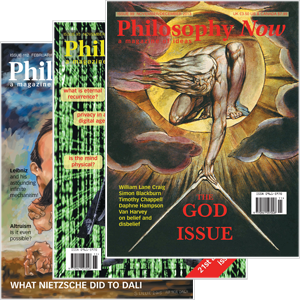
Your complimentary articles
You’ve read one of your four complimentary articles for this month.
You can read four articles free per month. To have complete access to the thousands of philosophy articles on this site, please
Hegel & History
Hegel, ‘The Father of Art History’?
Michael Squire scrutinises Hegel’s historical ideas about aesthetics.
Mention the name ‘Hegel’ among art historians, and you’ll likely be met with a blank expression, or else with fear and trepidation. Love him or loathe him, Hegel has proven to be one of the most influential thinkers of Western academe. But working in an age before the subject divisions of modern-day universities, Hegel practised something that went way beyond ‘philosophy’ alone. For my money, he is the ultimate interdisciplinary thinker.
What we today call ‘art history’ was fundamental to Hegel’s project. For Hegel, this included not just the study of the visual arts (including architecture, sculpture, and painting), but also the critique of literature and music, among other media. In the Western critical tradition, there is a venerable history of putting philosophy into dialogue with art, and vice versa. It is a legacy that stretches back to the ancient Greeks, above all to Plato and Aristotle. Later, in Enlightenment Germany, this tradition was formalised into the study of ‘aesthetics’ – the term favoured by Alexander Gottlieb Baumgarten in the mid-eighteenth century, derived from the Greek verb ‘to perceive’ (aisthanesthai). But Hegel arguably did more than any of his predecessors to intertwine the study of art with philosophy. In doing so, he has also exerted an influence across modern-day arts and humanities departments. As Ernst Gombrich famously put it, Hegel might be considered ‘the father of art history’, at least as practised by modern-day art historians. Not only did Hegel instil a ‘historicising’ impulse into the study of art, he also examined the history of artistic production – across peoples, cultures and civilisations – to tell a story about the past, present, and future of philosophy.
Over the last two hundred years, art historians have taken issue with any number of Hegel’s conclusions. But the fundamental questions that Hegel posed, no less than his frameworks for tackling them, endure: What do we mean by ‘art’? What does art make known, and how? In what ways might artworks help us to think about the past? And what exactly might the historical study of art accomplish? A knotty nexus of secondary issues ensues. How should we explain the need for certain artistic forms and practices at different times? Can we find patterns across cultures? Is it possible to understand the rise and fall of certain artistic practices over time and across space? If so, what might this make known? And what, in philosophical terms, does the history of art reveal about mankind’s past, present, and future?
As we navigate such questions, Hegel can serve as unparalleled guide. To be sure, Hegel does not have all the answers. But he can help us articulate what an ambitious philosophy of art – across peoples, cultures, and civilisations – might accomplish. Twenty-first century art historians have often been reluctant to engage with Hegel head-on. But to overlook Hegelian philosophy would be to impoverish the intellectual enterprise of art history.
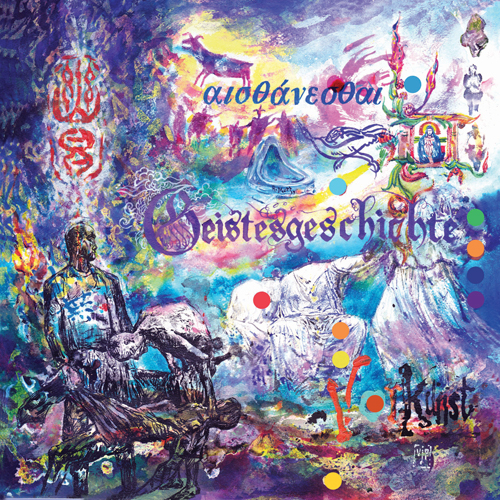
Image © Venantius J Pinto 2020. To see more art, please visit flickr.com/photos/venantius/albums
Hegel’s Lectures on Aesthetics
The influence of Hegel’s writings on art is all the more remarkable given the lack of any ‘writings’ to talk of. A few paragraphs of his Encyclopaedia of the Philosophical Sciences, in particular in the version published in 1830, shortly before his death in 1831, are dedicated to artistic themes. Other than that, our evidence is mostly second-hand. This explains the name given to Hegel’s most influential work on art: his Lectures on Aesthetics. We know that Hegel delivered a series of lectures on this theme at Heidelberg University during the summer semester of 1818. We also know that, after becoming professor at the newly established university at Berlin, Hegel did what academics often do: he recycled this material – and on no fewer than four occasions (in 1820–1, 1823, 1826, and 1828–9). The problem is that we cannot be sure about the precise content of those lectures. Hegel was renowned for his lacklustre delivery – mumbling into his notes, head burrowed into the podium. But the precise text of the lectures that Hegel read out is lost. In their place we have only approximate transcripts, cobbled together by Hegel’s students. Foremost among these are the versions compiled by Heinrich Gustav Hotho, who published two editions: first in 1835, in the context of Hegel’s collected works after his death in 1831; and second in 1842, based on Hegel’s lectures of 1823, 1826, and 1828–1829. In both cases, we are dealing with a heavily edited text: Hegel’s arguments have almost certainly been interspersed with Hotho’s own elaborations and embellishments.
This can sometimes make it difficult to reconstruct Hegel’s original thinking. But it has also given Hegel at least one critical advantage: Whenever those championing his thesis find fault or contradiction, they have been able to point the finger at Hotho – to blame the student rather than the master. In any case, the fact that Hegel devised his arguments for verbal delivery strikes me as important. Part of the intellectual vibrancy of these lectures lies in their being a spur for students (as indeed for present-day readers). They were designed to get us asking questions – to cut our critical teeth in revising, resisting, and rethinking elements of the professor’s own thinking.
Approaching Art
So much for the text. But what of the thesis?
For Hegel, the history of art formed part of his Idealist philosophy, centred around the historical development of self-consciousness, reason, and freedom (this development Hegel associated with ‘die Idee’ – the Idea, which for him is ultimate truth). Unlike his predecessor Immanuel Kant, who wrote on art but whose foremost concern was with the human experience of nature, Hegel considered artworks to have a significance of their own: What is important about art, Hegel posits, is its ability to make known the workings of spirit (Geist) in a tangible form. In his Phenomenology of Spirit, published in 1807, Hegel characterised spirit as an ‘artist’ (Künstler). The Lectures of Aesthetics flesh out this metaphor and turn it on its head: for Hegel, art gives form to ideas that lack material expression. In short, the purpose of art is to evoke, through sensory experience, spiritual truths that would otherwise remain unknown.
Since they evoke spiritual truths, the revelations of art go hand in hand with those of religion and philosophy. Like these other spheres, art gives expressive form to the spirit’s quest for self-understanding. But whereas philosophy makes things known through concepts, and religion operates through figurative imagery and ideas, art makes use of forms that can be experienced sensuously. The function of art might consequently be likened to a mirror — in Shakespeare’s famous metaphor, “to hold as ‘twere the mirror up to nature” (Hamlet). Rather than just reflecting social-historical realities, however, art constitutes a matrix through which such realities are established. Art is the ‘‘spirit appearing in the sensuous’’, as the Lectures put it; what we find beautiful in art, it follows, is ‘‘the sensible shining forth of the Idea’’ (‘das sinnliche Scheinen der Idee’).
Hegel’s approach to art explains the critical significance he ascribed to art’s history. Where Kant, with all his talk of ‘taste’ and ‘disinterested appreciation’, sought to outline timeless and universal principles of aesthetic experience, Hegel advances a different thesis: that “every work of art belongs to its own time, its own people, its own environment, and depends on particular historical and other ideas and purposes.’’ To study the history of art is therefore to unlock the course of human self-discovery: “in works of art the nations have deposited their richest inner institutions, and ideas and art is often the key, and in many nations the same key, to understanding their philosophy and religion.”
The point returns us to what Hegel called the ‘history of spirit’ (Geistesgeschichte). For Hegel, the importance of art lies in revealing something about spirit. The history of artistic production, across cultures, across the variables of time and space, and not least across different artistic forms, can help uncover not just what art has made known, but also the various ways in which it has done so.
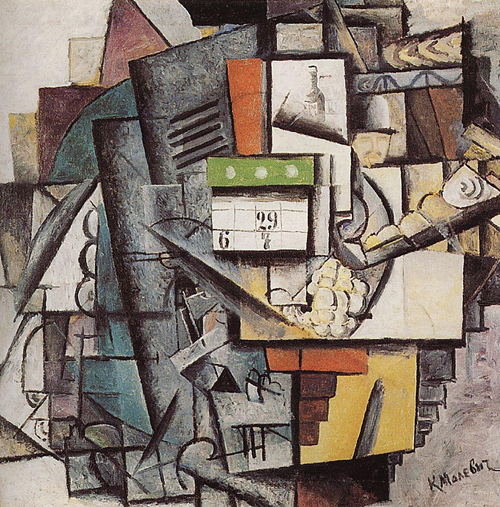
‘Art supplanted by theory’? Lady at a Tram Station by Kazimir Malevich, 1913
Art’s Retrospective History
Hegel seems to have organised his Lectures into three interconnecting parts. After a general introduction, the first section addressed the issue of beauty and the ideals of art – a theme that had much occupied Hegel’s predecessors in the late eighteenth and early nineteenth centuries, including Kant. This gave rise in the second part to an exploration of the different phases of artistic development, above all in historical perspective. The third section of the Lectures, its longest and most challenging, is structured around particular media: architecture, sculpture, painting, music, and poetry in different genres. It is worth emphasising the range of arts that Hegel discussed, encompassing not just visual media (including architecture, sculpture, and painting), but also music, poetry, and other kinds of literary and theatrical composition. There’s even passing mention of dance.
Two ideas are fundamental to Hegel’s approach. First, Hegel understood the development of art as inextricable from the larger development of human self-understanding. Second, Hegel viewed that development as progressive: when it comes to the history of art, as indeed to history at large, the narrative is one of unfolding advancement. What we might call ‘hindsight’ is crucial to the story of art that Hegel tells, since to him patterns of development can only be understood in retrospect. Given the forward march of history, Hegel viewed his own perspective as more advanced than those of other times and places before him.
The point leads to a quandary about contemporary attitudes to art. Hegel argues that the contemporary artworks of his own day, rather than demanding worship, solicit a more reflective sort of response. Art in its highest vocation, he says, is a thing of the past. “No matter how excellent we find the statues of the Greek gods, no matter how we see God the Father, Christ, and Mary so estimably and perfectly portrayed: it is no help; we bow the knee no longer,” he wrote.
The Symbolic, the Classical, the Romantic – & Beyond
Hegel constructed his lectures around the challenge of explaining this peculiar modern condition. For Hegel, the sense of art’s present ‘pastness’ has to be understood in relation to its earlier historical forms. That history is said to compromise three distinct phases, proceeding from what Hegel calls the ‘Symbolic’, through the ‘Classical’, and on to the ‘Romantic’.
Art’s first, ‘Symbolic’, stage effectively amounts to ‘pre-art’ (Vorkunst). It is associated with various cultural and religious perspectives – among them, those of the Persian, Zoroastrian, Egyptian, Judaic, and Islamic worlds. What unites the art of these different peoples, Hegel maintained, is a vague and abstract grasp of artistic subjects. This explains their sensuous deficiencies – their inherent lack of what might be understood as ‘beauty’. Egyptian art offers the clearest example. In the case of Egyptian imagery (or for that matter, hieroglyphics), the relationship between form and content – between sensuous appearance and the concepts they represent – is arbitrary. Egyptian images only ever point to – they only ever symbolise – something other than themselves. Consider one of Hegel’s favourite examples: The pyramids. For Hegel, a pyramid is designed to hide rather than reveal. It contains within it the body of the deceased: That is, something that signals mortality, lack, and absence – an empty negation of spiritual life.
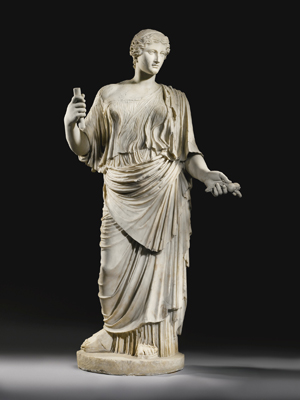
A ‘cold’ Greek sculpture
The second, ‘Classical’ stage, associated with Greek antiquity, is understood to have offered the decisive advance. Unlike symbolic art, classical forms achieved true beauty: Greek sculpture gives perfect sensuous expression to a new idea of the divine, and hence to the spiritual freedom that Greek religion enshrines. Here, as elsewhere, Hegel was influenced by the writings of Johann Joachim Winckelmann, whose History of the Art of Antiquity was published in 1764. Hegel’s method of narrating history from art had learned much from Winckelmann. But Hegel took issue with Winckelmann’s claim that contemporary artists should imitate Greek sculptural models. After all, however much modern viewers might admire them, don’t Greek statues ultimately leave us cold? The reason has to do with our modern remove from ancient Greek mentalities – something that Greek artists themselves helped to bring about. The more perfectly ancient sculptors attempted to embody the spiritual life of the gods, the more they tried to enshrine it in human statues, the more they revealed the divine spiritual life as lying beyond the body, and hence beyond sensuous experience: “The actual emergence of that contradiction between loftiness and particularity, between spirituality and sensuous existence, drags classical art itself to its ruin.” Classical sculpture ultimately sowed the seeds of its own demise, Hegel concludes: “The blessed gods mourn as it were over the blessedness of their bodily form.”
This demise gave rise to a new religion, Christianity, and to a third, ‘Romantic’, artistic mode. The Christian concept of the Incarnation – of God becoming man – proves crucial to Hegel’s concept of Romantic art and of religion alike. Just as the Incarnation indicates a new conception of the relationship between God and humanity, Romantic art contests the relationship between the spiritual and material. Where Classical art had concerned itself with the perfection of outward (bodily) form, Christian viewers had to look instead to a ‘beauty of inwardness’. For Hegel, it was the Protestant Reformation that fulfilled this spiritual promise, triumphing over Roman Catholicism’s fetishisation of matter.
What might supersede Romanticism? In the wake of the Reformation, Hegel argues, art has changed forever: “we have got beyond venerating works of art as divine and worshipping them” so that “the impression they make is of a more reflective kind.” This explains Hegel’s famous prophecy about art’s Auflösung, or dissolution. Discredited, art must now look to philosophy for ratification, refutation and reification: “It invites us to intellectual consideration, and that not for the purpose of creating art again, but for knowing philosophically what art is.”
In the third and final part of the Lectures on Aesthetics, Hegel offers some preliminary comments about what this art might look like. Different media are best suited to different concepts of art, Hegel argues, and are championed by different historical epochs: architecture is the most ‘Symbolic’; sculpture the most ‘Classical’; and painting the most ‘Romantic’ form. And yet in the modern, (post-?)Romantic world, none of these media will truly satisfy. Art, Hegel might say, is – or will be – supplanted by theory.
Hegel’s comments about art’s ‘dissolution’ have had a profound impact on the stories told of modern painting. Some would see Hegel as a sort of Nostradamus of Western art history: Not only did he diagnose the state of modernism, he also prophesied so much of art’s modernist march between the late nineteenth and early twenty-first centuries. The various art ‘-isms’ of the last two hundred years – ‘Impressionism’, ‘Cubism’, ‘Surrealism’, ‘Expressionism’, etc. etc. – speak, if not quite of art’s disappearance, at least of its prophesied convergence with philosophy – its “invitation to intellectual consideration…, for knowing philosophically what art is.’’ Think of an iconic piece such as Marcel Duchamp’s Fountain, an ordinary urinal turned upside-down and signed ‘R. Mutt’. Already in 1917 we have a work of art that pivots around questions of self-definition: “But is it ‘art’?”
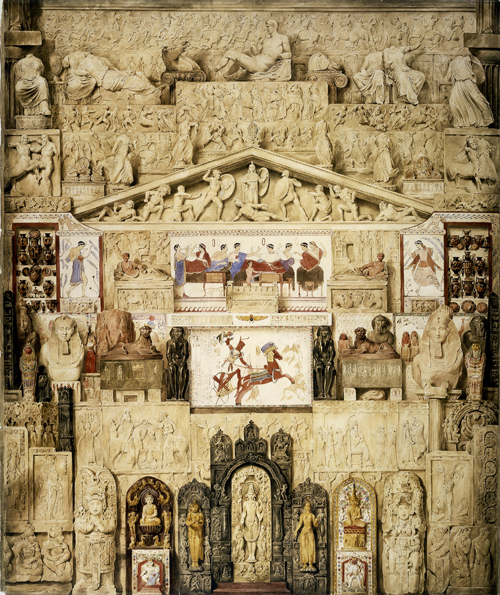
Assemblage of Works of Art, from the Earliest Period to the Time of Pheidias by James Stephanoff
The Present & Future of Art History
What might today’s art historians and critics take from Hegel’s lectures?
To be sure, the sort of grand narrative that Hegel espoused sits uncomfortably with much contemporary work in the discipline. As Hegel would have been the first to emphasise, his approach to art is very much a product of its time. His account of the development of the Classical and the Romantic, for example, is indebted to the perceived competition between ancient and contemporary forms. The history of collecting and displaying artworks proves crucial here, too: Karl Friedrich Schinkel’s new Royal Museum in Berlin (now the Altes Museum) was being constructed precisely when Hegel was delivering his lectures, as Hegel was well aware.
Beyond Prussia, an analogy might be drawn between Hegel’s story of artistic progress and the sorts of narratives being forged by new national museums. One revealing parallel comes in James Stephanoff’s painting dating from the early 1840s, An Assemblage of Works of Art, from the Earliest Period to the Time of Pheidias. Concentrating on objects displayed in the British Museum, Stephanoff’s ‘assemblage’ brings together works from Egypt, South America, India, Etruria, and Greece. Embedded within the painting, however, is also an idea of progressive artistic advancement: Classical art occupies both the metaphorical and literal high point. Observe, for example, how the triangular pediment at the top of the painting, encasing Greek architectural statues (from the island of Aegina), suggests the progressive thrust of art’s supposed development.
As in Stephanoff’s painting, there is much in Hegel’s narrative that is anathema to twenty-first-century art history and museological display. Inevitably, Hegel was no postcolonial thinker. Likewise, many of Hegel’s specific judgments – about the ‘primitive’ in art, and by extension his narrative about artistic self-discovery – lend themselves to potential cultural and political misuse: One need only think of the unmitigated horrors of National Socialism in Hegel’s own native Germany.
Given the conditioning of our own viewpoints in the early twenty-first century, it is perhaps easier to dismiss the Lectures than it is to seriously engage with them. But to reject the whole of Hegelian aesthetics as ‘Eurocentric’, ‘imperialist’ or ‘nationalist’ would be too simple. Quite apart from their dazzling breadth of knowledge, the Lectures afford respect to all forms of artistic production. Unlike many of his contemporaries, Hegel invested much effort in engaging with the history of art across the world, whether in his treatment of Indian poetry, or in his analyses of Indian, Persian, and Chinese painting. While he did not shrink from making qualitative judgments – and while he was convinced that his own views were more advanced than those of other peoples – Hegel judged all forms of art, regardless of time and place, to be worthy of serious study. On the one hand, his philosophy of art is premised on a willingness to make cross-cultural comparisons. On the other, Hegel saw the question of theorising what art is as inseparable from understanding what it has been, and vice versa. Rather than tender a single theory of aesthetic judgment, he offered a systematic treatment of art as historical practice. Indeed, the Lectures on Aesthetics devise a narrative of art that takes in the whole history of human self-understanding.
It is here, in my view, that Hegelian aesthetics can offer today’s art historians an opportunity. In recent years, especially in the UK and North America, many of the interests that motivated Hegel have resurfaced in the field of art history. Over the last decade, there has been much talk about ‘global’ approaches to the history of art – with a burgeoning bibliography to match. Likewise, the transformation of so many ‘Departments of Art History’ into ‘Centres for Visual Studies’, championing the comparative and cross-cultural aspects of art, chimes with elements of Hegel’s own approach.
In 2020, the underlying concerns of Hegel’s Lectures on Aesthetics look more contemporary than ever. The questions that Hegel raised some two hundred years ago have never been more urgent.
© Prof. Michael Squire 2020
Michael Squire is Professor of Classical Art at King’s College London, where he leads a research project on ‘Modern Classicisms’ (www.modernclassicisms.com). His books include The Art of Hegel’s Aesthetics: Hegelian Philosophy and the Perspectives of Art History, co-edited with Paul A. Kottman (W. Fink, 2018).









